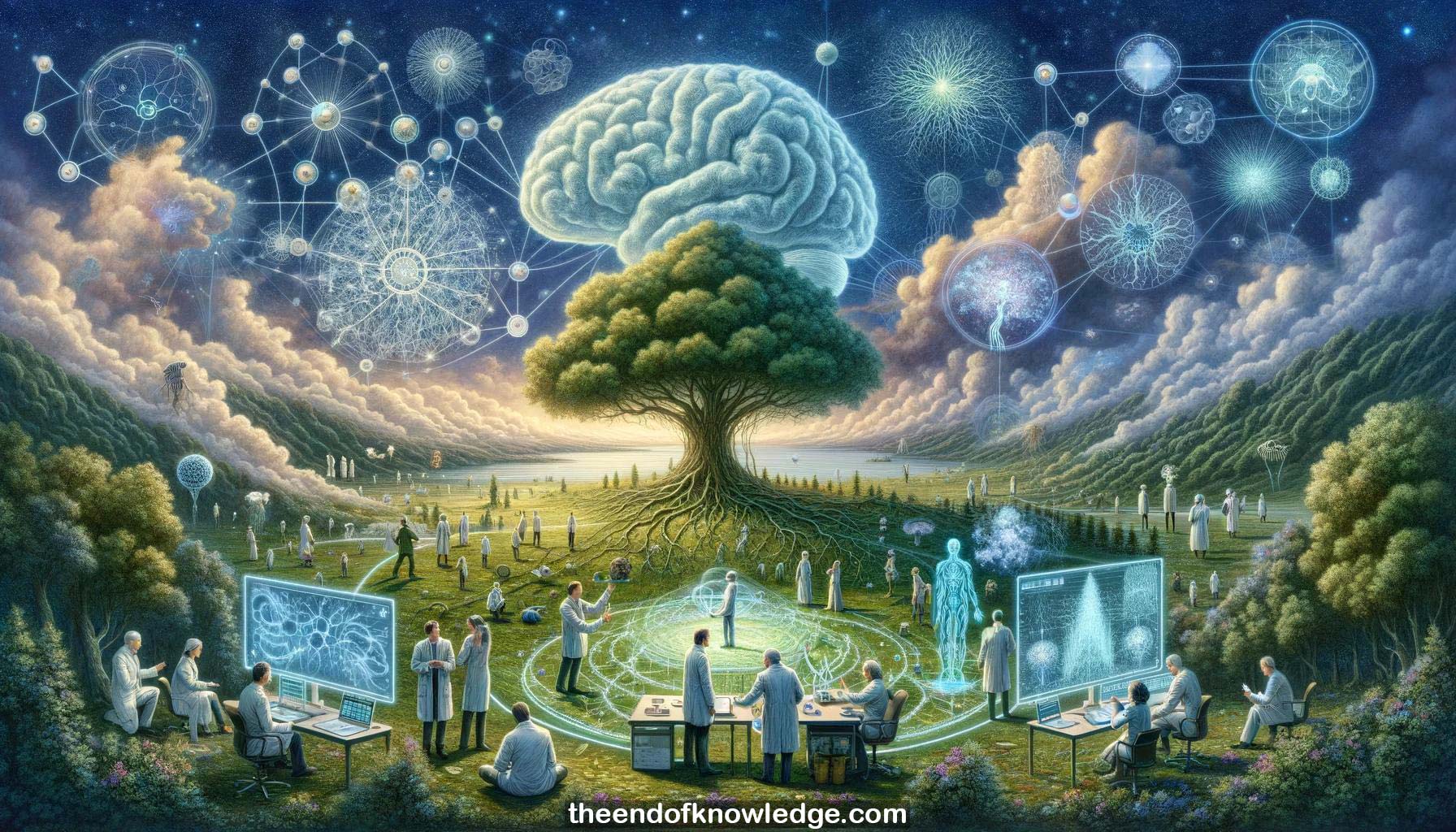 >
>
Concept Graph & Resume using Claude 3 Opus | Chat GPT4 | Llama 3:
Resume:
1.-Mavi Sanchez-Libes from IDIBAPS presents at the BCI Spring School 2024 organized by g.tec. Her video is played as she is at a conference.
2.-Mavi and the speaker have worked together for nearly 20 years on VR, AR, BCI projects, including decoding rodent position from hippocampal activity.
3.-They are currently collaborating on using nanoparticles activated by magnets in deep brain structures as a less invasive alternative to depth electrodes for Parkinson's.
4.-Brain interfacing and recording originated in the late 19th/early 20th century with Golgi staining allowing visualization of neurons, leading to cellular vs reticular theories.
5.-Ramon y Cajal's drawings showed detailed neural circuits and information flow. Brain networks are extremely complex with high neuronal and synaptic density.
6.-Technological advances in multi-electrode arrays, graphene electrodes, and Neuropixels probes allow recording from more neurons at various spatial and temporal scales.
7.-Computational capabilities have also expanded in parallel for acquiring and analyzing large neural datasets. Combining scales of brain activity remains challenging.
8.-In 2012, a tetraplegic patient controlled a robotic arm with decoded neural signals from a Utah array to drink independently, demonstrating BCI potential.
9.-IDIBAPS has published on characterizing various in vitro and in vivo brain activity patterns using graphene microtransistor arrays for brain-computer interfaces.
10.-These arrays enable chronic full-band recording, including slow DC components, for up to 5.5 months to identify and predict brain states like anesthesia depth.
11.-Historically, electrical brain stimulation was used empirically before understanding the brain's electrical nature. Examples include using electric fish for migraines in Roman times.
12.-20th century saw lobotomies, lesions, electroshock therapy to treat psychiatric conditions. Deep brain stimulation emerged in the 1990s and helps control Parkinson's symptoms.
13.-Non-invasive neuromodulation techniques like TMS and tDCS are used for diagnosis and treatment of various conditions, but mechanisms need further elucidation.
14.-Optogenetics and other methods allow precise manipulation of neural circuits. A 2020 study used a 1000-electrode array for a visual cortex prosthesis in the blind.
15.-Optogenetic stimulation of remaining retinal cells has enabled light perception in retinitis pigmentosa. Nanoparticles activated by magnets are an emerging neuromodulation approach.
16.-The MetaBrain project aims to advance magnetoelectric nanoparticles for minimally invasive deep brain stimulation as an alternative to DBS electrodes in Parkinson's disease.
17.-A 2025 course in Switzerland will cover advanced nanotechnologies for precise brain interfacing. Photopharmacology uses light-activated drugs as a neuromodulation strategy.
18.-Closed-loop systems that sense neural activity, analyze it, and adjust stimulation in real-time are an important frontier in brain-computer interfacing.
19.-Major BCI challenges include invasiveness, infection risks, adjusting scales, reversibility, biocompatibility, human translation, and the underlying complexity of neural circuits.
20.-The brain operates in many different states with distinct activity patterns and functional connectivity, adding to its complexity. States range from consciousness to coma.
21.-The Perturbational Complexity Index (PCI), based on EEG responses to TMS, objectively measures brain state and consciousness level in patients with disorders of consciousness.
22.-PCI reflects the brain's capacity to sustain complex activity patterns after perturbation. It is high in conscious states and low when unconscious.
23.-Studying PCI in brain slices reveals inhibitory GABA-A transmission is critical for response complexity. Modeling shows a balance of excitation/inhibition enables maximum complexity.
24.-Multi-scale studies integrating synaptic, circuit, and whole-brain levels are crucial for comprehensive understanding but pose major challenges. Photopharmacology may enable control.
25.-BCI-controlled virtual bodies and limbs elicit ownership illusions through multisensory and visuomotor correlations, with applications in rehabilitation and remote robotic control.
26.-A study found BCI-control with motor imagery elicited more agency and responsibility over actions compared to SSVEP and passive virtual arm movements.
27.-Feeling of control depends not just on precision but also use of physiological movement areas. This has implications for BCI user experience design.
28.-Machine learning has dramatically improved BCI, enabling an avatar that a paralyzed patient could control to generate facial expressions and synthesized speech.
29.-BCIs may allow impaired individuals to engage in rich virtual social interactions and activities in shared metaverse spaces as their disabilities are bypassed.
30.-The coming decade will see transformative integration of neurotechnology and the expanding metaverse, ushering in a new era of "digital brain" research and applications.
Knowledge Vault built byDavid Vivancos 2024